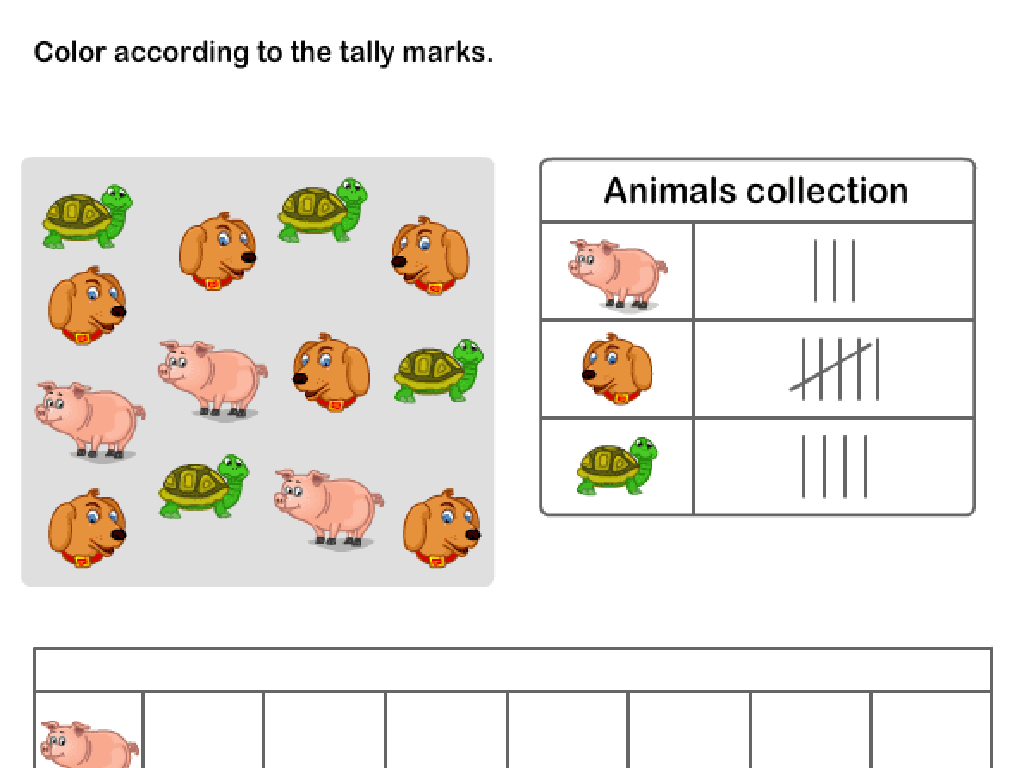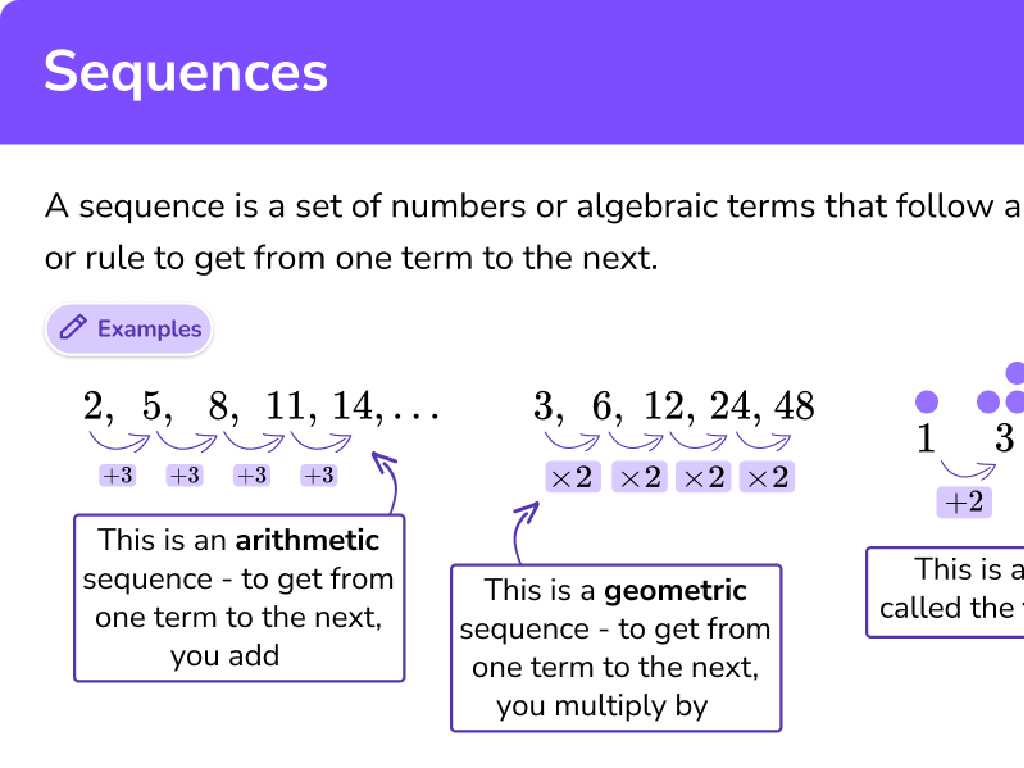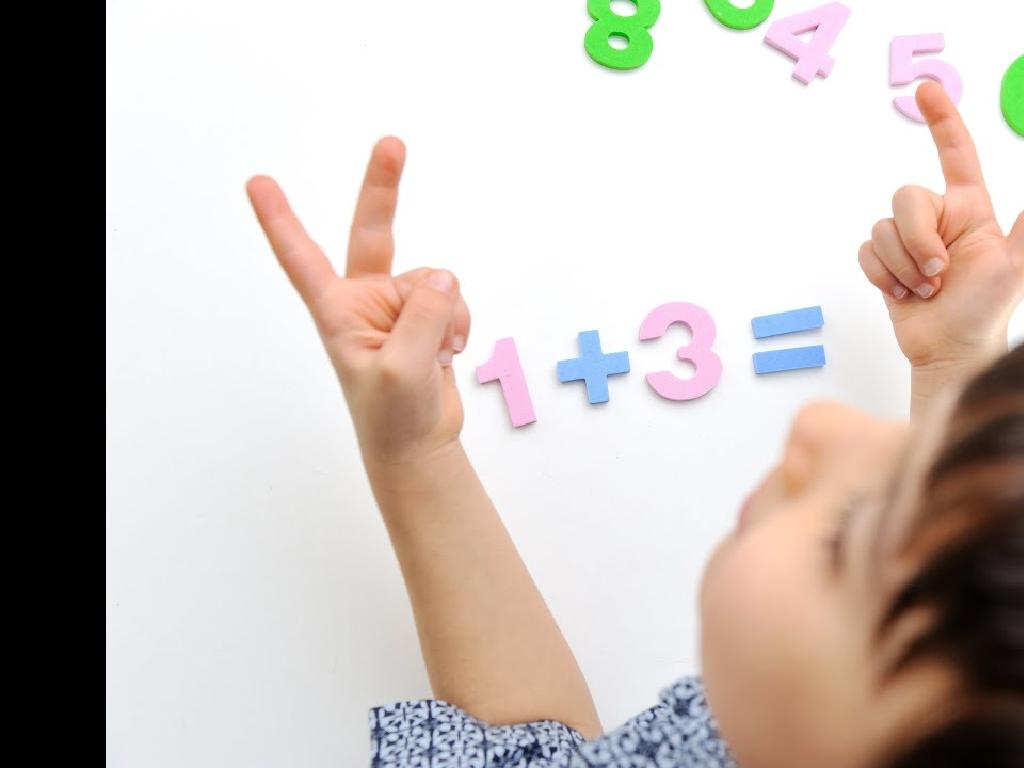Earth's Rotation And Orbit
Subject: Science
Grade: Fifth grade
Topic: Astronomy
Please LOG IN to download the presentation. Access is available to registered users only.
View More Content
Today’s Adventure: Earth s Rotation and Orbit
– Earth’s rotation on its axis
– Earth spins like a top, taking about 24 hours for a full turn
– Earth’s orbit around the Sun
– It takes one year for Earth to complete an orbit around the Sun
– Day and Night cycle explained
– Rotation causes day when facing the Sun, night when facing away
– Our place in the solar system
|
This slide introduces students to the fundamental concepts of Earth’s rotation and its orbit around the Sun, which are responsible for the cycle of day and night. Emphasize that Earth rotates on its axis once every 24 hours, leading to day and night. Explain that Earth’s orbit is the path it takes around the Sun, which it completes once every year. Highlight our planet’s position in the solar system and how these movements are part of the larger cosmic dance. Use a globe and a flashlight to demonstrate rotation and orbit, showing how different parts of the Earth experience sunlight and darkness at different times.
Understanding Earth’s Rotation
– Earth spins on its axis
– Axis: an imaginary line through Earth’s center
– Takes ~24 hours for a full rotation
– One rotation is called a day
– Rotation results in day and night
– The side facing the sun has daylight
– Essential for life on Earth
– Regulates temperature and environment
|
This slide introduces the concept of Earth’s rotation and its significance. Rotation refers to the Earth spinning around an imaginary line called its axis. It takes approximately 24 hours to complete one full rotation, which we experience as a day. This rotation is responsible for the cycle of day and night, as different parts of the Earth face towards or away from the sun. Understanding Earth’s rotation is crucial for students as it explains the daily patterns we observe and its importance for maintaining life on Earth by regulating temperature and environmental conditions. Encourage students to visualize the rotating Earth and consider how this movement creates the day-night cycle.
Understanding Earth’s Orbit
– Orbit: Earth’s path around the Sun
– Earth travels in an elliptical orbit around the Sun, which is why we have years.
– One orbit takes about 365.25 days
– This is why we have a year! It’s a bit more than 365 days, hence leap years.
– Orbit causes seasons to change
– As Earth orbits, different parts tilt towards the Sun, causing seasons.
– Leap years add an extra day
|
This slide introduces the concept of Earth’s orbit and its implications. Students should understand that an orbit is the path one object in space takes around another. In this case, Earth’s orbit around the Sun takes approximately 365.25 days, which is the basis for our year. The extra .25 days accumulate to add an extra day every four years, creating a leap year. The tilt of the Earth’s axis combined with its orbit leads to the changing seasons as different parts of the Earth receive varying amounts of sunlight throughout the year. Encourage students to think about how the orbit affects daily life, such as the length of days, the temperature throughout the year, and the concept of a year itself.
Exploring Earth’s Rotation
– Earth’s rotation impacts daily life
– Rotation causes day/night cycles and affects weather patterns.
– Time zones create different local times
– As Earth rotates, different areas face the sun, causing time differences.
– Leap years keep our calendar aligned
– Adding an extra day every 4 years compensates for Earth’s 365.25-day orbit.
– Understanding rotation through activities
– Use a globe and light source to simulate Earth’s rotation and observe changes.
|
This slide introduces students to the concept of Earth’s rotation and its effects on life. It explains how rotation leads to the day and night cycle, influences weather, and creates time zones due to the varying exposure to sunlight across the globe. The concept of leap years is introduced to show how our calendar accounts for the extra quarter day in Earth’s orbit around the sun. To reinforce learning, suggest a class activity where students use a globe and a flashlight to simulate Earth’s rotation, observing how different parts of the Earth are illuminated over time. This hands-on activity will help students grasp the reasons behind time zones and the necessity of leap years.
Exploring Earth’s Orbit and Rotation
– Earth’s tilt and seasons
– Earth’s axis is tilted at about 23.5°, causing seasons.
– Solstices and Equinoxes
– Solstices mark summer/winter, equinoxes mark spring/fall.
– Earth’s motion feels still
– Our planet moves smoothly, so we don’t sense the motion.
– Understanding Earth’s dynamics
|
This slide aims to explain the effects of Earth’s tilt on seasons and the concepts of solstices and equinoxes. Emphasize that the tilt of Earth’s axis leads to varying sunlight distribution, resulting in different seasons. Solstices are the longest and shortest days, while equinoxes are days with equal daylight and night. Discuss why we don’t feel Earth’s movement, relating it to smooth and constant motion without acceleration. Use examples like riding in a car at a steady speed; we often don’t feel like we’re moving. Encourage students to visualize these astronomical events with models or simulations to better grasp the concepts.
Hands-On Activity: Earth’s Movements
– Model Earth’s rotation using globes and flashlights
– Simulate Earth’s orbit in groups with a central Sun
– Observe effects of rotation and orbit
– Notice how day and night occur, and how seasons change
– Discuss observations and findings
– Share what you’ve learned about Earth’s movements
|
This slide introduces a hands-on class activity designed to help students understand the concepts of Earth’s rotation and orbit. For the rotation model, students will use globes and flashlights to simulate how the Earth rotates on its axis, leading to day and night. In the orbit simulation, students will form groups and use objects to represent the Earth orbiting around a central ‘Sun,’ demonstrating how this movement results in the changing seasons. After the activities, lead a discussion where students can observe and share how rotation and orbit affect our planet. Provide guidance and ensure each group understands the objective of the activities. Possible activities include rotating the globe to simulate day and night, orbiting a ‘Sun’ to show how Earth’s tilt causes seasons, and creating a skit to demonstrate these concepts.
Conclusion: Earth’s Rotation and Orbit
– Recap: Earth’s rotation and orbit
– Daily effects of these movements
– Rotation causes day/night cycle, Orbit results in seasons
– Open floor for questions
– Let’s discuss and clarify
|
This slide aims to summarize the key points about Earth’s rotation on its axis and its orbit around the Sun, emphasizing how these astronomical movements have profound effects on our daily lives, such as the cycle of day and night and the change of seasons. Encourage students to think about how these movements impact their routines and activities. After the recap, open the floor for any questions the students might have. This is an opportunity to address misunderstandings, clarify complex concepts, and engage in a discussion that reinforces their learning.
Class Activity: Earth’s Journey in Space
– Craft your own Earth orbit model
– Show and tell with your Earth model
– Start a week-long Moon diary
– Observe the Moon each night, note its shape and position
– Understand Earth’s movement
– Learn about rotation and revolution
|
This interactive class activity is designed to help students understand Earth’s rotation and orbit through hands-on learning and observation. Students will create a model of Earth’s orbit to visualize how Earth travels around the Sun. They will then present their models to the class, explaining the concepts of rotation and revolution. As homework, students will keep a Moon diary for one week, recording their observations of the Moon’s phase and position in the sky. This will help them understand the lunar cycle and how it relates to Earth’s orbit. Teachers should provide materials for the craft and guide students on how to observe the Moon. Possible activities include creating different orbit crafts with varying materials, presenting in small groups, and comparing observations in the Moon diary.






